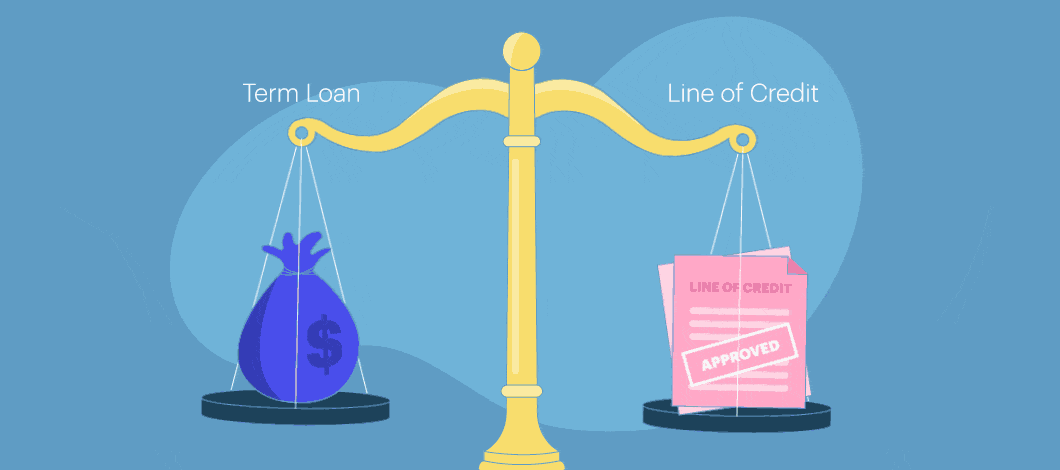When applying for a personal loan, one of the most crucial decisions is choosing between a fixed or variable interest rate. The type of rate you select can significantly impact your monthly payments, total loan cost, and financial stability.
But which one is better? The answer depends on your financial situation, risk tolerance, and market conditions. This article explores the pros and cons of fixed and variable personal loan interest rates, helping you make an informed decision.
Key Takeaways
✔ Fixed interest rates provide stability but may be more expensive initially.
✔ Variable interest rates offer potential savings but come with higher risks.
✔ Long-term borrowers benefit more from fixed rates.
✔ Short-term borrowers may save money with variable rates.
✔ Always compare loan offers and assess market conditions before choosing.
Understanding Fixed and Variable Interest Rates

What is a Fixed Interest Rate?
A fixed interest rate remains constant throughout the loan term. This means your monthly payments will stay the same, providing predictability and stability.
What is a Variable Interest Rate?
A variable interest rate fluctuates based on market conditions. It is often tied to a benchmark rate, such as the prime rate or LIBOR. As a result, your monthly payments can increase or decrease over time.
Pros and Cons of Fixed Personal Loan Interest Rates
Advantages of Fixed Interest Rates
✅ Predictability: Your monthly payments remain the same, making budgeting easier.
✅ Protection from Market Changes: You won’t be affected by rising interest rates.
✅ Easier Financial Planning: Since your loan cost is fixed, you can plan long-term expenses effectively.
Disadvantages of Fixed Interest Rates
❌ Higher Initial Rates: Fixed interest rates are usually higher than variable rates at the start.
❌ Less Flexibility: Even if market rates drop, your rate remains the same.
❌ Potentially Higher Overall Cost: If interest rates decrease, you might end up paying more than necessary.
Pros and Cons of Variable Personal Loan Interest Rates
Advantages of Variable Interest Rates
✅ Lower Initial Rates: Variable rates are usually lower at the beginning, saving you money upfront.
✅ Potential for Lower Costs: If interest rates drop, your loan becomes cheaper.
✅ Short-Term Savings: For short-term loans, you may benefit from lower overall interest costs.
Disadvantages of Variable Interest Rates
❌ Unpredictability: Monthly payments can fluctuate, making budgeting challenging.
❌ Risk of Rate Increases: If interest rates rise, your loan becomes more expensive.
❌ Uncertain Long-Term Costs: Over time, you could end up paying more than with a fixed-rate loan.
Fixed vs. Variable Personal Loan Interest Rates: A Detailed Comparison
| Feature | Fixed Interest Rate | Variable Interest Rate |
|---|---|---|
| Stability | High – Payments remain the same | Low – Payments may change |
| Initial Cost | Usually higher | Usually lower |
| Long-term Cost | Predictable | Can be higher or lower depending on market conditions |
| Risk Level | Low – No surprises | High – Potential fluctuations |
| Best for | Those who prefer stability and long-term planning | Those willing to take risks for potential savings |
Which One is Better for You?
When to Choose a Fixed Interest Rate
- If you prefer stable and predictable payments.
- If you’re taking a long-term loan (5+ years).
- If interest rates are expected to rise in the future.
When to Choose a Variable Interest Rate
- If you can handle fluctuating monthly payments.
- If you’re taking a short-term loan (1-3 years).
- If market rates are expected to decrease.
Real-Life Examples: Fixed vs. Variable Loans in Action

Example 1: Fixed-Rate Loan
Emma takes a 5-year personal loan of $20,000 at a fixed interest rate of 7%. She pays $396 per month, and her total interest cost is $3,760 over five years.
Example 2: Variable-Rate Loan
John takes the same $20,000 loan but with a variable interest rate starting at 5%. Initially, he pays $377 per month. However, after two years, the rate rises to 6.5%, increasing his monthly payment to $391. By the end of the loan, he ends up paying a total interest of $4,100—more than Emma’s fixed-rate loan.
This shows that variable rates can be beneficial when interest rates remain low but can become expensive if rates increase.
Also Read :-What Is A Mortgage Loan And How Does It Work?
Conclusion
Choosing between fixed and variable personal loan interest rates depends on your financial situation and risk tolerance.
- Fixed rates offer stability and predictability, making them ideal for long-term borrowers.
- Variable rates start lower but come with the risk of increasing payments.
If you prefer consistent payments and long-term financial security, a fixed rate is the better option. However, if you’re comfortable with risk and want to save money in the short term, a variable rate might be suitable.
Before making a decision, consider your financial goals, interest rate trends, and ability to manage fluctuating payments.
FAQs
Can I switch from a variable rate to a fixed rate later?
Yes, some lenders allow refinancing to switch from a variable rate to a fixed rate, but it may come with additional fees.
Are variable-rate loans riskier?
Yes, because your payments can increase unexpectedly, making them harder to manage.
Why do fixed-rate loans have higher initial rates?
Lenders charge higher fixed rates to cover the risk of future interest rate fluctuations.
Are fixed rates always better for long-term loans?
Generally, yes. They provide stability and protection from rising interest rates.
Can I save money with a variable-rate loan?
Yes, but only if interest rates stay low or decrease during your loan term.
Which type of loan is better for bad credit borrowers?
Fixed-rate loans are usually better since they provide predictable payments, which help with budgeting.
How can I determine which loan type is right for me?
Consider your financial stability, risk tolerance, loan duration, and market conditions before making a decision.
